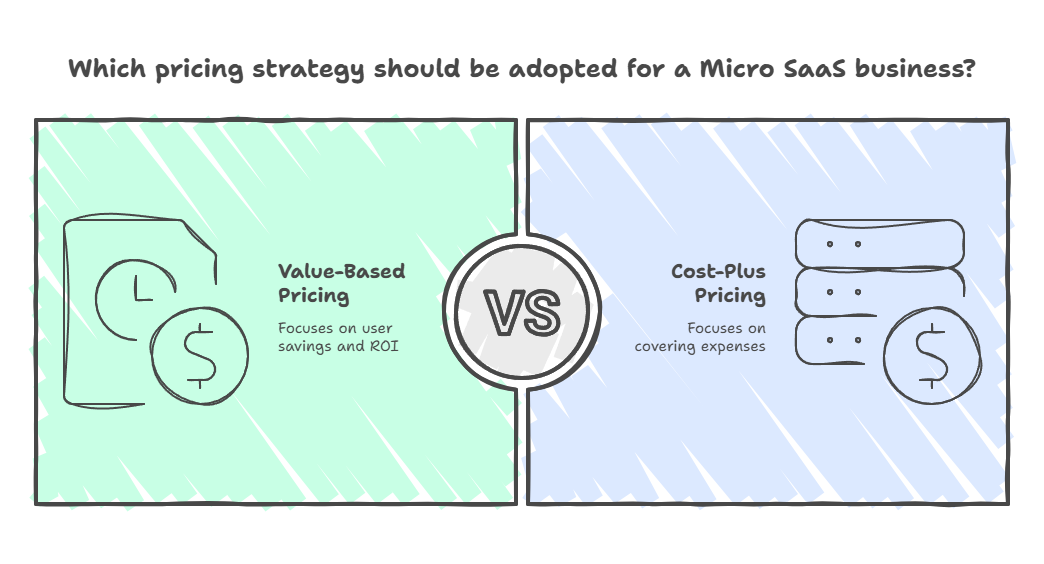Micro SaaS: A Complete Guide to Building Small-Scale SaaS Businesses
There is a paradigm shift in the software industry. As tech giants make headlines with billion-dollar valuations, a less-hyped revolution is taking place in the shadows. It’s where individual founders and small teams are building profitable businesses that address a specific problem for a niche audience.


Micro SaaS: A Complete Guide to Building Small-Scale SaaS Businesses
There is a paradigm shift in the software industry. As tech giants make headlines with billion-dollar valuations, a less-hyped revolution is taking place in the shadows. It’s where individual founders and small teams are building profitable businesses that address a specific problem for a niche audience.
Welcome to the world of Micro SaaS.
Micro SaaS is a new breed of SaaS companies that are much more modest in their market size and funding. These are tight, niche companies that demonstrate that you do not have to follow a Silicon Valley playbook to create something significant and profitable.
What Makes Micro SaaS Different?
Micro Software as a Service (Micro SaaS) is characterized by its narrowness in terms of solving one highly specific problem for a well-defined niche audience. Think of it as the opposite of the "everything for everyone" model that prevails in the technology sector.
The main features that distinguish Micro SaaS are:
- Surgical Focus: These businesses do not create feature-rich platforms; instead, they address a single problem. This specialization allows quick development, shorter time to market, and very low competition.
- Bootstrap-Friendly: Most Micro SaaS businesses are bootstrapped, with initial capital as low as $1,000-$5,000. This model will provide founders with full control over their fate without the burden of investor expectations.
- Small Team Advantage: The businesses are usually operated by one founder or a small group of people, which enables them to make decisions faster and have a personal customer relationship that big companies cannot compete with.
The advantage of this model is that it is accessible. You do not have to have years of experience in a Fortune 500 company or an MBA to recognize a particular problem that needs to be solved.
The Numbers Don't Lie: Micro SaaS Is Thriving
The SaaS market is already worth 266.23 billion in 2024 and is expected to grow to 1.13 trillion by 2032 at an astonishing 20% CAGR.
Most importantly, these businesses are extremely lucrative. Micro SaaS businesses tend to have profit margins between 70% to 80%, which is high because of low costs of operation and automation focus. This is compared to the traditional startups that would run at a loss for years in an attempt to grow at all costs.
Why Micro SaaS Works in Today's Market
A number of market dynamics are coming together to make Micro SaaS more possible than ever:
Technology Democratization
The development tools, cloud infrastructure, and no-code platforms have significantly reduced the bar to entry in building software. What used to take teams of developers can now be done by individuals with motivation.
Niche Market Recognition
Companies are increasingly realizing that generic solutions are not enough. They are happy to pay high prices to get tools that address their unique needs rather than compromising with features that are good enough in broader platforms.
Remote Work Culture
The transition to distributed teams has led to the need for special tools that cater to specific workflows and collaboration issues that were not as common in traditional office settings.
AI and Automation
These technologies allow small teams to compete successfully by automating routine tasks and offering advanced functionality without huge development resources.
Building Your Micro SaaS: A Practical Roadmap
Creating a successful Micro SaaS business requires a systematic approach that prioritizes problem-solving over product building. Here's a comprehensive guide to get you started on the right path.
Step 1: Master the Art of Problem Discovery
The key to any successful Micro SaaS is a thorough knowledge of a particular problem. Start by getting yourself into places where your potential customers hang out. Become a member of industry forums, Discord servers, Reddit communities, and relevant Facebook groups. Listen to frequent complaints and frustrations.

Seek out problems that satisfy the following critical criteria: that they are specific enough that there are few solutions, painful enough that people will pay to solve them, common enough that the solution will provide ongoing value, and experienced by a defined group willing to spend money on solutions.
Do not fall in love with your initial idea. Rather, test several issues before investing in any development. Build basic landing pages outlining the possible solutions and gauge actual interest by collecting email signups or pre-orders.
Step 2: Define Your Niche with Laser Precision
Successful Micro SaaS companies triumph because they are the best solution to a particular group of people, as opposed to an average solution to everyone. Identify your target audience with near-obsession. Rather than small business owners, think of local restaurant owners who have a hard time integrating online ordering or freelance graphic designers who require client approval processes.
The narrower your niche, the more you can understand their precise pain points, talk in their language in your marketing, and develop features that feel tailored to their specific situation. This particularity also decreases competition and enables you to set high prices.
Step 3: Construct Your MVP with Ruthless Focus
When you have confirmed that you have a valid problem for a particular audience, avoid the temptation to develop a complete solution. Your minimum viable product must only solve the main pain point. It should be a painkiller, not a vitamin; that is, it should address a burning, specific issue that users encounter on a regular basis.
Start with the most basic version that provides actual value. Some of the most successful Micro SaaS tools started as simple web forms, simple automation scripts, or even manual processes that demonstrated the idea before any serious development was undertaken.
Use low-code tools such as Bubble, Webflow, or Zapier to test out your idea in a short time. These platforms enable you to experiment with your ideas without a major initial investment in bespoke development. Even simple solutions built on reliable WordPress hosting can serve as effective MVPs for testing market demand before investing in custom development.
Step 4: Implement Smart Pricing and Revenue Models
Pricing strategy is a make-or-break issue in a Micro SaaS business. The most successful ventures are subscription-based with pricing levels that vary based on usage or feature sets. Start with simple pricing, maybe one tier with a free trial, then add complexity as customers respond.

Think value-based pricing as opposed to cost-plus pricing. If your tool saves users 2 hours per week, then price it based on what those 2 hours are worth to the user, not what your servers cost you. Most Micro SaaS tools cost between $20 and $200 per month since they address a particular issue in a streamlined manner.
Do not underestimate your solution. Businesses are generally ready to pay more for tools that address actual issues than consumer apps. A $50/month tool that saves a lot of time or avoids expensive errors can be a great ROI for business users.
Step 5: Customer Success and Retention
The average monthly churn rate of niche Micro SaaS businesses is 2-5%, but the best performers have a churn rate as low as 1.8%. The best way to ensure that churn remains below 5% is by remaining in close touch with the changing needs of your users.
Institute proactive customer success behaviors early. This will involve thorough onboarding processes, frequent follow-ups with the users, and fast response rates to support requests. As you are probably working with a small team, personal attention will be a competitive advantage.
Use detailed analytics to learn user behavior patterns. What features are the most engaging? What are the common areas of struggle for users? Which actions are correlated with long-term retention? Use this information to constantly improve your product and onboarding process.
Step 6: Scale Thoughtfully Without Losing Focus
As your Micro SaaS scales, you will be under pressure to expand the feature set and target larger markets. Resist this temptation until you have completely conquered your first niche. It is better to be the unquestioned leader in a small market than a small fish in a big market.
When you do expand, think about related issues to your current user base instead of entirely new audiences. If you have created an awesome tool that helps restaurant owners, the next thing that would make sense is another tool that helps restaurant owners, not a tool that helps retail stores.
Automate as many of your operations as you can to remain lean. It is possible to automate customer support, billing, onboarding, and simple marketing, leaving you with more time to work on product development and strategic growth.
The Future Belongs to Focused Solutions
With the software market getting more and more crowded, the businesses that benefit the most are those that can solve a particular problem exceptionally well instead of trying to do everything for everyone.
Micro SaaS is not only a business model but also a philosophy that places a higher value on sustainability than scale, profitability over growth rates, and customer satisfaction over investor presentations. In a world where a lot of startups fail due to the loss of focus in the quest to raise venture capital, Micro SaaS presents a new way of doing things, a way that does not involve losing focus and can lead to a profitable and meaningful business.
Micro SaaS is a tried and tested method of making something meaningful on your own terms, whether you are a long-time developer who wants to work independently or an entrepreneur who wants an approachable entry point into the software business.
It is not about whether you can build the next billion-dollar unicorn. It is the ability to recognize one particular issue and address it in a superior manner than others. In the Micro SaaS world, that is more than sufficient to create a successful business.


.webp)
Newsletter
Join our newsletter today Get instant updates

20,000+ users subscribed to newsletter

